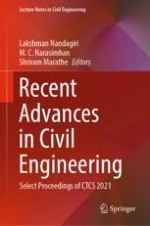2023 | OriginalPaper | Buchkapitel
Applications of Geospatial Technologies and Frequency Ratio Method in Groundwater Potential Mapping in Iyenda River Catchment, Konso Area, Rift Valley, Ethiopia
verfasst von : Muralitharan Jothimani, Abel Abebe, Gosaye Berhanu
Erschienen in: Recent Advances in Civil Engineering
Verlag: Springer Nature Singapore
Aktivieren Sie unsere intelligente Suche, um passende Fachinhalte oder Patente zu finden.
Wählen Sie Textabschnitte aus um mit Künstlicher Intelligenz passenden Patente zu finden. powered by
Markieren Sie Textabschnitte, um KI-gestützt weitere passende Inhalte zu finden. powered by
